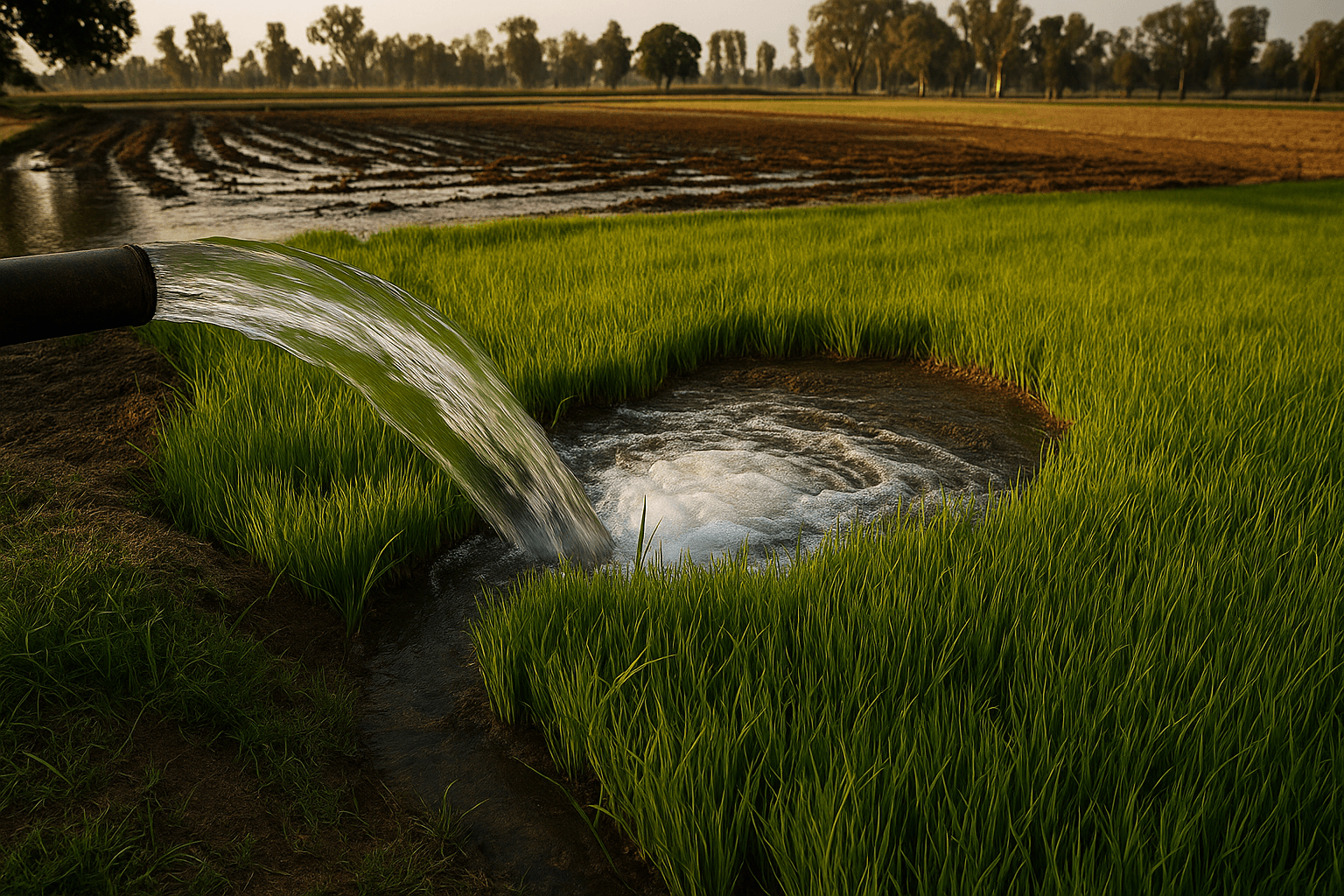How Water Scarcity Is Affecting Crop Patterns in Pakistan
Abdul Raafey Shoukat

Pakistan’s agriculture sector—employing nearly 40% of our workforce and contributing around 20% to the GDP—is under serious pressure. The growing water crisis isn’t just making farming harder; it’s changing what we grow, how we grow it, and where businesses should invest their time and resources.
In this blog, we’ll break down how water shortages are forcing a shift in crop patterns, what this means for different regions and stakeholders, and how agri-businesses, exporters, and policymakers can stay ahead of the curve.
A Country Running Dry: What the Water Crisis Really Means
Pakistan has officially moved from being water-stressed to water-scarce. That means our per capita water availability is now below 900 cubic meters, far lower than what’s considered safe. Since agriculture uses more than 97% of our water, the sector is bearing the brunt of the crisis.
What’s driving this?
- Climate change is shrinking glaciers and making rainfall unpredictable.
- Old canal systems are wasting 30–40% of the water they carry.
- Farmers are still growing crops that guzzle water—like sugarcane and rice—even in drought-prone areas.
- And geopolitically, upstream control by India over rivers like the Chenab and Jhelum has added a layer of uncertainty to our water supply.
When the Water Doesn’t Flow, Neither Do the Crops
Our traditional crop calendar depends heavily on predictable irrigation. But over the last two years, low water releases from Tarbela and Mangla dams have thrown entire seasons off schedule.
Here’s what that looked like on the ground:
In southern Punjab, cotton sowing dropped by 15% due to delayed canal flows.
In Sindh, late rice planting led to lower yields and poorer grain quality.
Sugarcane farmers faced losses because their long-duration crop couldn’t be sustained without consistent water.
Tensions between provinces are rising too. Sindh has accused Punjab of taking more than its fair share of water, while controversial projects like the Chashma Canal have sparked protests downstream.
From Thirsty Crops to Smart Choices
Farmers across Pakistan are rethinking what they grow—and it’s not just about survival anymore. The shift toward climate-resilient, low-water crops is happening fast.
Technology Is Changing the Game
It’s not just about switching crops—how we grow them is changing too. Thanks to technology, farmers have better tools to make smarter water decisions.
Deficit Irrigation
Instead of flooding fields, farmers are applying water only at the most critical times in the crop cycle. This approach has cut water use for wheat by up to 30% without hurting yields.
SRI for Rice
The System of Rice Intensification (SRI)—a technique using wider spacing and less water—is saving 40–50% of water and increasing yields by around 20% in Sindh.
Drip and Sprinkler Systems
In citrus farms and vegetable plots, drip irrigation is slashing water usage by over 60%, while also improving fertilizer efficiency.
Smart Farming Platforms
Government-backed systems like LIMS (Land Information & Management System) are helping farmers:
- Monitor soil moisture through satellites
- Get alerts for the best sowing times
- Track crop health before it’s visible in the field
What This Means for Businesses and Investors
Water scarcity isn’t just a farmer’s problem—it’s a business risk, a supply chain disruptor, and an investment driver.
For Agribusinesses
- Input costs are rising, especially for irrigation-dependent operations.
- Crop failures are impacting contract fulfillment, storage planning, and seed sales.
- There’s growing opportunity in drought-tolerant crop supply chains, like pulses and oilseeds.
For Exporters
- Traditional exports like basmati rice and cotton are vulnerable to weather and water shocks.
- In 2024, rice exports dropped 18% due to delayed planting and irrigation shortages.
- Exporters are now exploring pulses and millet for both regional and European markets.
For Investors
- Look for startups offering smart irrigation tools, crop advisory apps, and resilient seed varieties.
- Support farmer co-ops pivoting to sustainable crop production.
- Focus on climate-linked agri-finance products (e.g. crop insurance, solar-powered irrigation credit lines).
Policy Still Playing Catch-Up
While the private sector is adapting fast, public policy is lagging behind.
What Needs to Happen:
- Enforce crop zoning: Ban sugarcane in arid zones, encourage low-water crops with targeted subsidies.
- Fix the canals: Invest in water metering, leak reduction, and digital monitoring.
- Reform water pricing: Make water conservation financially rewarding for farmers.
- Support climate-smart agriculture: Provide financial and technical assistance for transitioning to sustainable practices.
The Big Picture: Adapt or Fall Behind
This isn’t a seasonal shift—it’s a long-term transformation. The idea that cotton must be grown in south Punjab or rice in upper Sindh is no longer viable. Climate, water, and economics are forcing everyone to think differently.
But this isn’t just a story of loss—it’s a story of adaptation. There’s a clear opportunity for those who move early: businesses that develop new supply chains, investors who back smart agri-tech, and policymakers who prioritize sustainability over status quo.
Final Word: Let’s Make Every Drop Count
If you’re in the agriculture industry—whether you’re a grower, trader, policymaker, or tech provider—now is the time to recalibrate. Water scarcity is already reshaping crop patterns across Pakistan. The winners will be those who align with the new realities, not fight them.